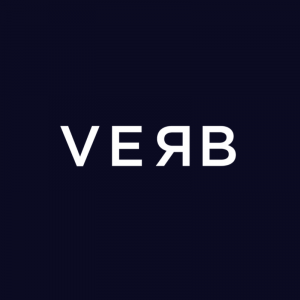How SEO Differs for a Luxury Brand Compared to a Mass-Market Brand

It’s a well-known fact the SEO landscape is ever-changing. With regular search engine updates, priority changes in ranking factors and the continuous fluctuations of consumer online behaviour, many businesses rely on SEO professionals to pilot their SEO efforts.
With this in mind, there has been a substantial shift in differentiating SEO strategies to suit specific industry sectors. With 75% of luxury consumers beginning their research online, 68% using search engines to conduct their research, and 70%-90% of users more likely to click on results on the first page of a search engine, the right SEO strategy is crucial for business growth.
At VERB, our team of experts have worked across all industries within luxury and the mass-market. In this article Joemar Carillo discusses how SEO differs for luxury brands compared to mass-market brands.
Keyword Focus: Relevancy vs Search Volume
The keyword strategy with a mass-market brand is more reliant on search volume. The aim is to make the website more visible and accessible to as many consumers as possible. As long as there is an opportunity to optimise content and target those keywords, an ‘anything goes’ strategy is acceptable.
This approach does not work with a luxury brand. A huge part of luxury marketing bides itself on the concept of exclusivity and limited access to the select few. In this instance, targeting long tail keywords (keywords containing three or more words) is more appropriate. They are more specific and will help drive precise traffic to your luxury brand products.
Long tail keywords typically have lower search volumes. However they have been found to have a higher conversion rate (36%). For example, the long tail keyword phrase ‘luxury leather bag in London’ contains the shorter keyword phrase ‘leather bag’ and ‘luxury leather bag’. Long tail keywords are typically less competitive compared to short tail keywords, so though they may not get as much search volume, in most cases it can be easier to rank higher for those keywords. Long tail keywords are a true testament of quality vs. quantity.
High-Quality Content is Key
One of the key differences we see with a luxury brands website is the focus on high-quality imagery and storytelling content. Whereas with mass-market brands, the content pieces are more general.
The tone of voice and copy for a mass-market website is centered around bottom funnel language. The copy focuses on driving conversions there and then. But with a luxury brand the buyer journey process is lengthier and there is more research made by the buyer. One of the main purposes of the website content is to inform and inspire a potential luxury buyer to make the purchase.
As we know, most luxury purchases are completed in store, 72% of luxury shoppers preferring to purchase in-store, and 65% say they want to be able to see, touch and feel the products before buying. Therefore the messaging should be more suitable for luxury consumers in the consideration stage as they’re likely to conduct research online and make a decision based on the online presence and communications.
When a luxury brand SEO content strategy is created it’s important the brand website showcases consistent campaign messaging and a sleek user experience (like the physical in-shop experience would be). High-quality content development is key as it not only appeals to your intended audience, but makes them more likely to read, engage, and share your onsite content. When content is optimised correctly, it can help your luxury brand website rank higher for the target keywords and naturally acquire those first page rankings without compromising the user experience.
Refined Offsite Activity
What differentiates SEO offsite activity for a luxury brand vs. a mass-market brand comes down to the quality of websites where the offsite activity occurs. With that said, backlinking is still an important part of SEO. High-quality websites link back to your website and act as a “vote of confidence” which prompts search engines to acknowledge your site as trustworthy and high quality.
Offsite SEO activity for a luxury brand would primarily focus more on editorial articles, press releases in popular media outlets and acquiring links from top media digital publications. While an offsite SEO strategy has a primary focus on the ranking benefits, the right placement on another high value or luxury website can also drive relevant traffic back to your luxury brand site.
Voice Search Speech and Language
In recent years there has been a shift in search attitudes due to the rise of smart speakers and voice technology. With more consumers using voice search to conduct their search queries, the use of natural language needs to be taken into consideration. The average voice search query is 29 words long. Therefore adapting your keyword strategy to incorporate long tail keywords that fit within natural language is the best chance of success. An example of the difference of natural language search includes using question format, such as, ‘Where can I buy the best luxury leather handbag in London?’ vs. ‘luxury handbag London’.
The Roundup
Its clear SEO for a luxury brand is about taking the extra step to ensure the quality of keywords, refined content and offsite activity is executed at the same level of craftsmanship and care the brand has done with their products and customer service. Should you want to learn more about this and talk to an expert in this field, please get in touch to see how VERB can support your SEO efforts.









